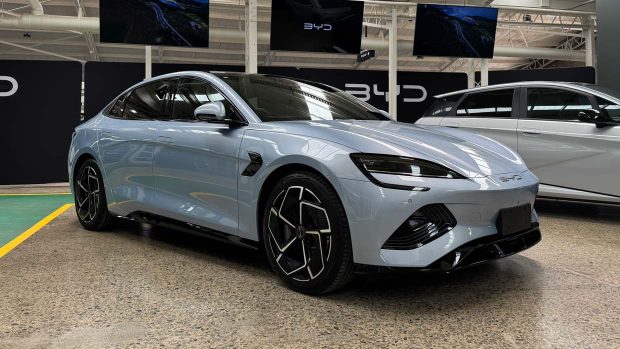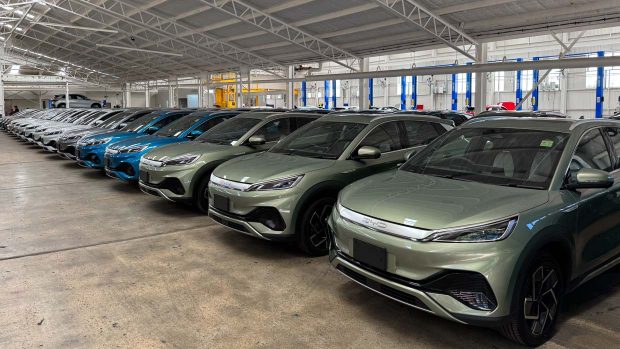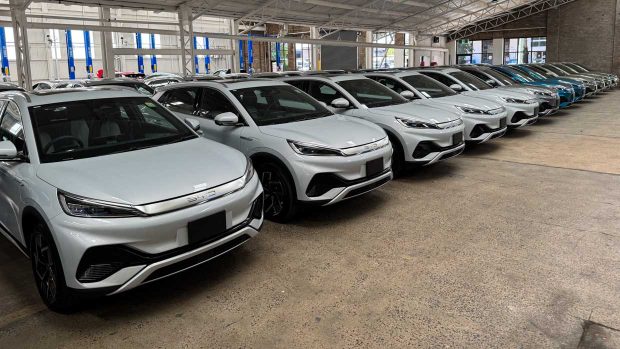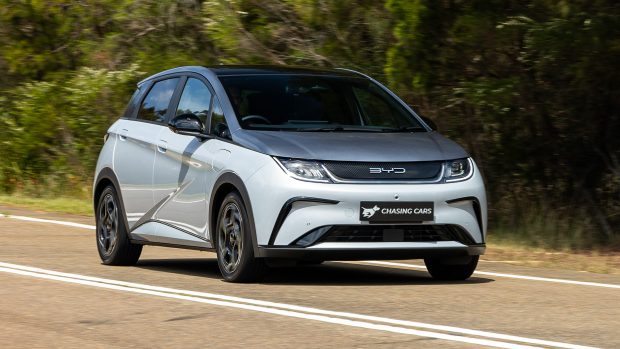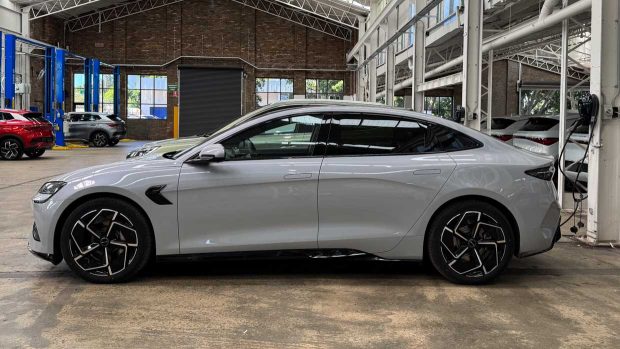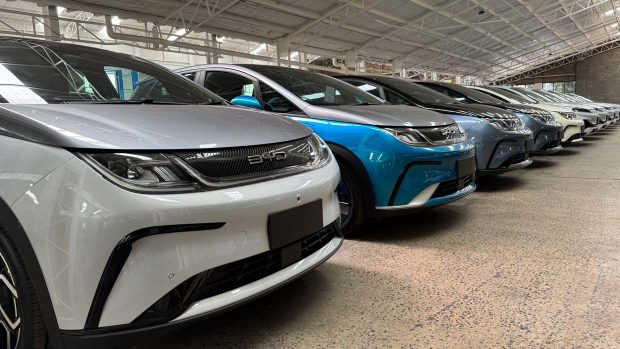-
Car Reviews
- All reviews
- Midsize SUVs
- Small cars
- Utes
- Small SUVs
- Large SUVs
- Large cars
- Sports SUVs
- Sports cars
- Vans
Latest reviews
- Car News
-
Car Comparisons
Latest comparisons
- Chasing Deals
Set to release two models every year from 2024, BYD has set a “lofty” target to steal the sales pole position from Toyota in Australia
BYD has set its sights on becoming Australia’s most-sold car brand by 2030, with a plan to rapidly expand its lineup by launching two new models every year from 2024.
The goal to be number one – and steal top spot from Toyota – is backed by a sub-goal to be a top-five brand in Australia within two to three years, with the launch of two crucial vehicles next year: a new midsize SUV (not a large SUV as had previously been reported) and the brand’s first ever ute.
The expanding product lineup and ambitious targets are backed by news that the Chinese marque will also launch an additional 30 new retail outlets and more service locations over the next 18 months in Australia.
Speaking to media at the opening of the automaker’s new BYD Service and Support Centre in Sydney, Luke Todd, the CEO of EV Direct, BYD’s distributor in Australia, said: “on the trajectory that we look at, and what we know we have in the market and what’s coming to the market, there’s no reason why BYD cannot reach that lofty goal by 2030”.
Launched in Australia only 18 months ago, the Chinese EV brand has just launched its third electric vehicle and first ever sedan, the BYD Seal. Comparatively, Toyota – Australia’s highest-selling brand for close to three decades – sells no less than 16 models in Australia. Though based on its planned product trajectory, that’s a portfolio size that BYD could rival.
“We’ve committed to a minimum of two vehicles every year, but we are aiming for more”, Mr Todd said.
Certainly if the brand releases a minimum of two vehicles every year from next year, this would see BYD operating with a circa 15-17 model slate by the time we reach 2030.
Year to date, Toyota leads Australian sales charts with 174,957 units delivered until October this year. This is well ahead of second place Mazda which currently sits on 84,536 sales.
Comparatively, BYD has shifted 9718 units this year for its Atto 3 small SUV (9618 units) and only just launched Dolphin small hatchback (100 units).
One key BYD competitor, Tesla, has by comparison delivered 39,985 vehicles so far this year, including 24,267 Model Y midsize SUVs and 15,718 Model 3 sedans.
While Tesla – and most other EVs in Australia – operate at a higher price-point, BYD has a clear remit to focus on lower price points.
“We’ve demonstrated that we’ve brought three high-quality vehicles at prices that were unthinkable 12-24 months ago, and it’s our mission to continue to do that”, Mr Todd said.
The brand currently sells Australia’s cheapest electric car, with the entry-level variant of the Dolphin hatchback coming in at $38,890 before on road costs, and only last month did BYD shock the industry with a sub-$50K price tag for its Model 3 rivalling Seal.
Mr Todd said that the Seal has had the highest level of interest of any BYD released so far and that “it won’t surprise me if the Seal sales volumes surpass the Atto 3 because of the levels of interest”.
Crucially, the brand – which has been EV only until now – has confirmed the new ute and midsize SUVs to launch next year will be plug-in hybrid vehicles, which Mr Todd says will have a substantial range of between 1000 and 1200 kilometres, delivered by a dual-electric motor powertrain paired with a petrol engine.
Mr Todd says that the technology, which is dubbed ‘DM-i’ by the brand – or dual-motor intelligence – will “catapault [BYD] into a wider audience segment [within Australia]”, adding that the tech is “hybrid vehicles as nobody has yet seen them in Australia”.
“A hybrid that’s typically on sale with our competitors across Australia is a petrol vehicle that’s had a battery introduced to it”.
“There is no equivalent [to BYD’s hybrid technology] in market anywhere in the world. This is exclusive to BYD and we believe this is superior to anything else on the market”.
“Over the coming months as we release these vehicles, there will be lots of education to explain how it works and the benefits of it”, Mr Todd said.
Importantly, the DM-i tech is available on certain BYD models sold overseas such as the Seal.
The brand says that it is shooting to classify the technology as a new category – which they call EPH or “electric platform hybrid”, as opposed to conventional classifications of battery electric, plug-in hybrid, or petrol-electric hybrid.
The hybrid tech will launch first with the as yet unnamed midsize SUV before coming to Australia as part of the new ute in 2024.
Latest news
About Chasing cars
Chasing Cars reviews are 100% independent.
Because we are powered by Budget Direct Insurance, we don’t receive advertising or sales revenue from car manufacturers.
We’re truly independent – giving you Australia’s best car reviews.
